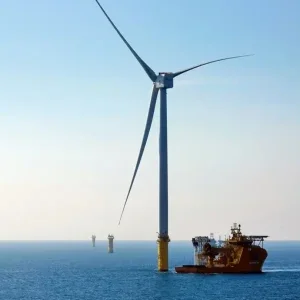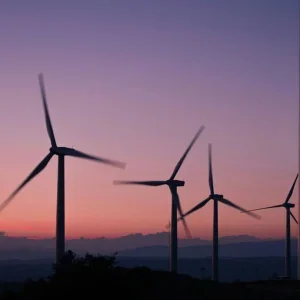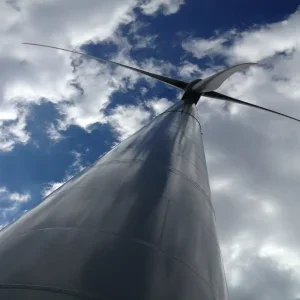As the US drops into second place with China dominating the small wind turbine market, GlobalData reports on how this shift lines up with the rest of the market overview.
In 2008, the US was the largest contributor to global small wind capacity, with a 37.8% share, while China was a close second with 37.6%. By 2014, although the capacity in the US had increased significantly, its share had reduced to 25.8%, as China, Canada and the UK had all increased their shares through large capacity additions during the 2008-14 period. Germany, Spain and India had small shares of the global installed capacity in 2008, and maintained these shares without any significant change by ensuring consistent annual capacity additions.
In the US and UK, there has been a trend of higher-capacity turbines contributing more to the annual capacity addition. This can be attributed to the fact that more commercial and other non-residential installations were made between 2008 and 2014, and for these organisations to achieve a higher return on investment, it is preferable to use larger turbines. In the UK, all small wind turbines receive the same tariff, but larger turbines reduce the setup cost per unit of capacity and increase returns.
Exports and imports
All the major small wind market countries carry out manufacturing activity, but not all countries excel at manufacturing all turbine sizes. For example, Canada meets its domestic demand for turbines above 50kW through domestic manufacture, but imports smaller turbines from the US, and is the US’s primary export market for these turbines.
The UK is the largest manufacturer of small wind turbines in Europe. While Germany and Spain manufacture turbines, they also import some turbines from the UK. China, meanwhile, is the largest manufacturing hub for small turbines, and manufactures turbines of all sizes and designs. Chinese turbines are the cheapest globally, and are exported to several countries.
European countries have excelled in the R&D of several innovative designs of small wind turbines, mostly for integration with urban infrastructure such as buildings, roads and streetlights. However, they have continued using the traditional horizontal axis wind turbines (HAWT) and vertical axis wind turbines (VAWT), and have been unenthusiastic about manufacturing and installing the new designs.
China has been more open to implementing the European designs, and their own indigenous innovative designs, at a commercial scale. It manufactures several revolutionary vertical axis designs, including Darrieus, Savonius, Windspire, Helical turbines and Maglev turbines, all of which have been installed in various parts of the country.
The reason European countries have not adopted the new designs could be due to the negative public sentiment over urban wind power – as most of these designs are meant for urban integration – and also the risk aversion that thwarts commercialisation. China, on the other hand, does not have a public sentiment problem with urban wind power, and finds it easier to commercialise the designs due to low-cost manufacturing.
Small versus large wind turbines
Small wind turbines – with capacities lower than 100kW – are used to power individual homes, farms and small businesses. They are mounted on free-standing towers and can be installed on properties with as little as one acre of land. There are significant differences between small and large wind turbines. They use different materials and technologies, including the mechanism for transferring energy.
Large wind turbines require huge project financing, and the decision to purchase these depends on the ready availability of financing, financial incentives provided by government, return on investment and the payback period. On the other hand, the decision to purchase small wind turbines can depend on factors such as energy independence, rising electricity prices, and the desire to reduce pollution.
Small wind installations require different local administration approvals, and wind speed and environmental assessments compared with large wind turbines. The capacity factor of a small wind turbine is considerably lower, typically 15% or less, whereas large wind turbines lie in the range of 25-30%. This is because as small wind turbines are mounted at lower heights, the annual mean wind speeds at the position might be closer to or less than the cut-in speed for the turbine.
Small wind turbine market
With increasing environmental concerns, governments have shifted their focus towards renewable energy generation. Countries such as the US, the UK, India and Germany have all introduced polices and incentives for the development of their small wind power markets.
Small wind turbine usage has a huge potential for growth, and is dependent on government incentives, but in certain applications it is indispensable and independent of state-sponsored promotions. The end-user cost is the most crucial factor affecting market growth in developed and developing countries, while other factors that impact the development are rebate programmes, property tax exemptions, financial incentives, annualised net metering and permitting issues. The demand for small wind turbines will further increase with rising energy concerns.
With small wind turbines, power can be produced independently of the electric grid. The small wind turbine market is expected to witness higher growth with the increasing incentives announced by various governments and, increasing, end-user awareness. The major applications of small wind turbines include battery charging, irrigation and residential, small industrial and commercial purposes. The payback period also plays a major role in considerations related to installing a system. This mainly depends on wind resource quality, height of the tower, siting, prevailing energy costs and turbine performance. Against this backdrop, with the increasing incentives offered by various governments, the small wind market is expected to grow to contribute 4.85GW in 2025.
Global small wind turbine cumulative installed capacity was 350.9MW in 2008, and increased to 912.6MW in 2014 at a compound annual growth rate (CAGR) of 21.1%. The value of the market more than doubled and is expected to continue increasing significantly. The countries driving the small wind power market are China, the US and the UK, which cumulatively contributed approximately 80% of the global small wind power capacity in 2014. In the near future, small wind power capacity is also expected to grow in European countries including Germany, Spain, Poland, Sweden and Ukraine. With the expected increase in small wind capacity in these countries, along with others such as India and Japan, the global small wind turbine market is expected to increase from 912.6MW in 2014 to 4.8GW by 2025, at a CAGR of 16.4%.
In 2008, the US was the largest contributor to the global small wind capacity with a 37.9% share, while China was a close second with 37.7%. By 2014, although the capacity in the US had increased significantly, its share had reduced to 25.8% as China, Canada and the UK increased their shares with large capacity additions during 2008-14. Germany, Spain and India had small shares of the global installed capacity in 2008, and maintained this through consistent annual capacity additions over the period.






